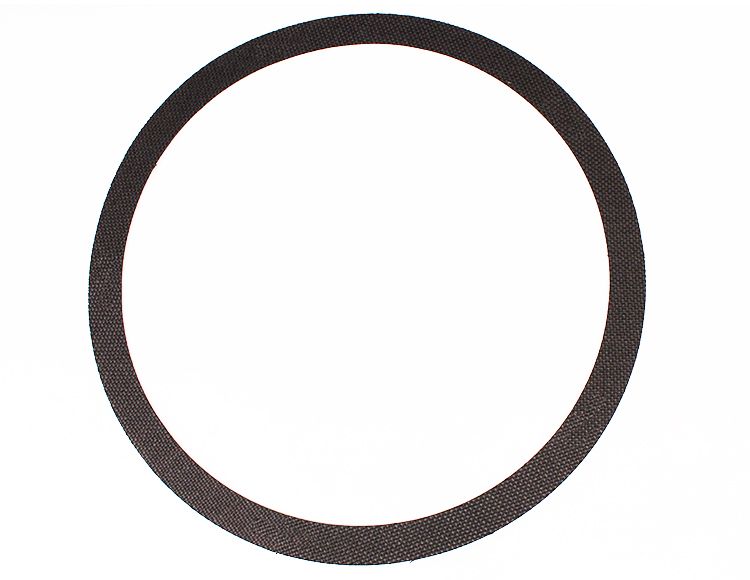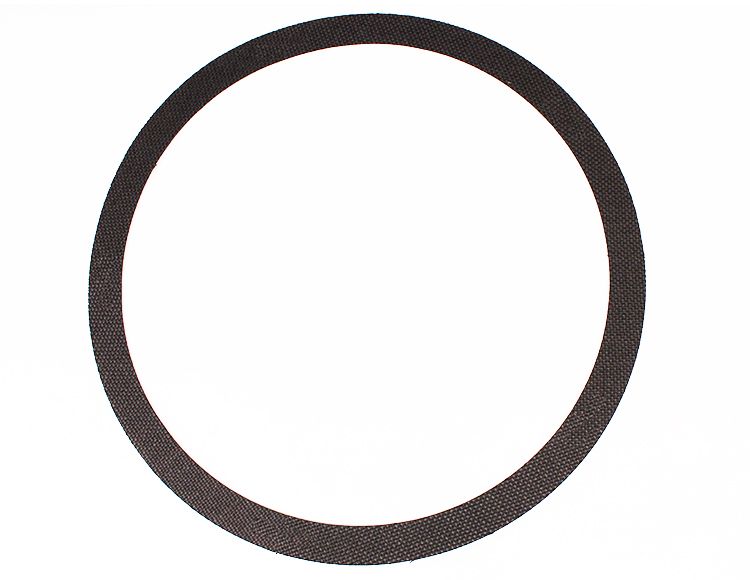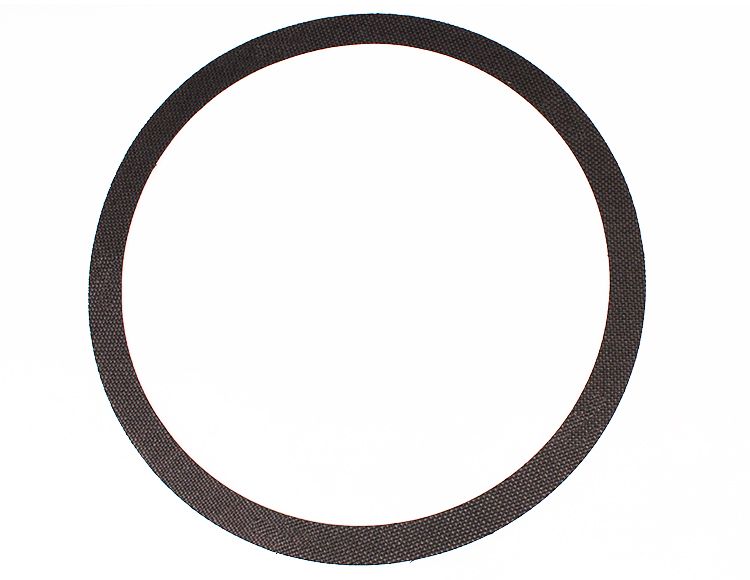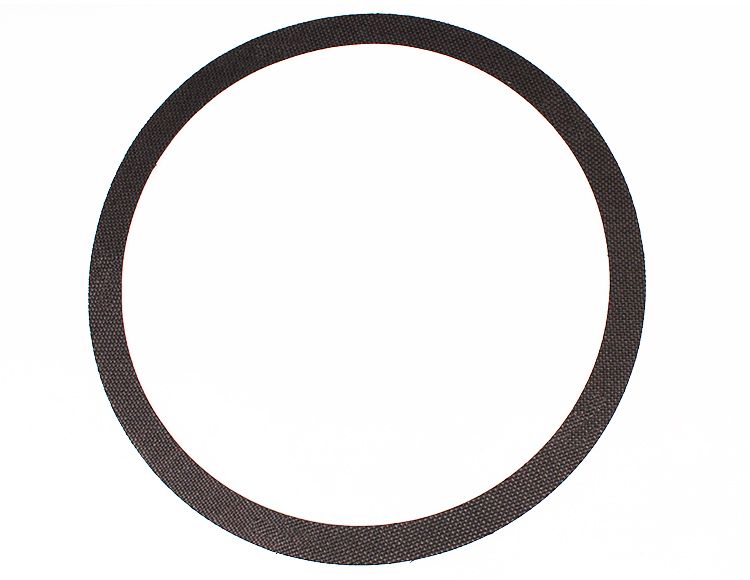Rebuilding the New GM Captive Clutch Without Fear
Ed Lee
The new General Motors Captive Clutch has four spring steel straps which restrict the rotational movement of the piston. One end of each strap is riveted to the piston and the other end is riveted to the cover (Figure 1).
There's a rebuilding fear factor in this setup because the rivet at the cover end of the strap passes through the cover and is very susceptible to leak if disturbed (Figure 2).
One way to lessen the chances of a leak in this area is to avoid disturbing this rivet during the rebuild process. It is possible to rebuild the lockup clutch for this converter by only removing the rivets at the piston end of the straps.
 |
 |
The same tools rebuilders use to prep the
edges of the impellers and covers prior to the
weld process can be used to remove the rivets.
The major portion of the rivet head can be
removed by a hand grinder with the 4 ½"
abrasive wheel. The final portion of material
can be removed with the angle air grinder
with a 2" abrasive disk (Figure 3).
Once the rivet head has been removed and the piston is properly supported, the remaining part of the rivet can easily be driven out with a punch. A tool for supporting the piston can be made from a 6" long piece of .120" thick by ½" wide steel flat stock. Machine a slot in the end of the flat stock the width of the rivet head (.250"). Continuing the slot another .250", the .060" to .065" depth of the rivet head will allow you to use the same tool to reinstall the replacement rivet (Figure 4).
 |
 |
You will need to
narrow and radius the
sides of the tool so
it will fit in between
the cover I.D. and
the piston O.D.
while they are in the
assembled position (Figure 5). Sketch or scribe
the inside and outside
radius onto the
tool to establish a
profile for cutting or
grinding.
After all four rivets have been removed, rotate the piston ¼" clockwise and lift it out of the cover. The clutch will look like a typical 245mm clutch, but will have woven carbon friction material on both sides (Figure 6).
 |
 |
Measure the thickness of the OE piston, because like other captive clutches there is limited TCC piston travel.
Another unique feature of the GM captive clutch is the way the clutch release clearance is set. Since the turbine hub does not contact the cover, the converter end play is the clutch release clearance. If you followed the same procedure as with any new converter and checked the overall height and end play before the converter was cut apart, you would know that the clutch release clearance was about .010".
Rebuilding the New GM captive clutch converter – No worries!
Ed Lee is a Sonnax Technical Specialist who writes on issues of interest to torque converter rebuilders. Sonnax supports the Torque Converter Rebuilders Association.
Related Units
Related Parts
Required
Recommended
280mm LU (4L60-E) “VJCX”, 298mm LU (TH250C, TH350C, 200-4R, 4L60 & E), 300mm (4L60-E)
Friction Ring S20250WC
- Material: WC
- Outer Dia.: 11.125"
- Inner Dia.: 10.000"
- Thickness: 0.020"
Required
Recommended
245mm LU Euro (5L40-E), 258mm LU (4L60-E, 5L40-E), 258mm LU (4T65-E), 4L60-E (298mm), Single-Plate Performance Converter, 4L60-E (300mm), Single-Plate Performance Converter, 6L80 (300mm), Single-Plate Performance Converter
Friction Ring S20300WC
- Material: WC
- Outer Dia.: 9.500"
- Inner Dia.: 8.250"
- Thickness: 0.020"
Required
Recommended
245mm LU (3T40, 3L30, TH200C, 4T60-E, 4L60 & E:S-10 only), 4L60 (700-R4), 4L60-E, 200-4R (298mm) Single Plate Performance Converter (Mounting Ring), 4L60-E (300mm), Single-Plate Performance Converter (Mounting Ring), 4L80-E, 4L85-E, Single-Plate Performance Converter (Mounting Ring), AODE, 4R70W Performance Converter
Friction Ring S20320WC
- Material: WC
- Outer Dia.: 9.000"
- Inner Dia.: 7.750"
- Thickness: 0.020"
Required
Recommended
6T40/6T45, 236mm
Friction Ring S20680WC
- Material: WC
- Outer Dia.: 9.813"
- Inner Dia.: 8.562"
- Thickness: 0.020"
Required
Recommended
6L80, 6L90 (300mm)
Friction Ring S20750WC
- Material: WC
- Outer Dia.: 11.120"
- Inner Dia.: 9.840"
- Thickness: 0.020"
Required
Recommended
6F50/6F55, 6T70/6T75
Friction Ring S20930WC
- Material: WC
- Outer Dia.: 10.200"
- Inner Dia.: 9.200"
- Thickness: 0.020"
Required
Recommended
6L90 (Captive Clutch)
Friction Ring S20960WC
- Material: WC
- Outer Dia.: 10.170"
- Inner Dia.: 9.055"
- Thickness: 0.020"
Required
Recommended
While Sonnax makes every effort to ensure the accuracy of technical articles at time of publication, we assume no liability for inaccuracies or for information which may become outdated or obsolete over time.







